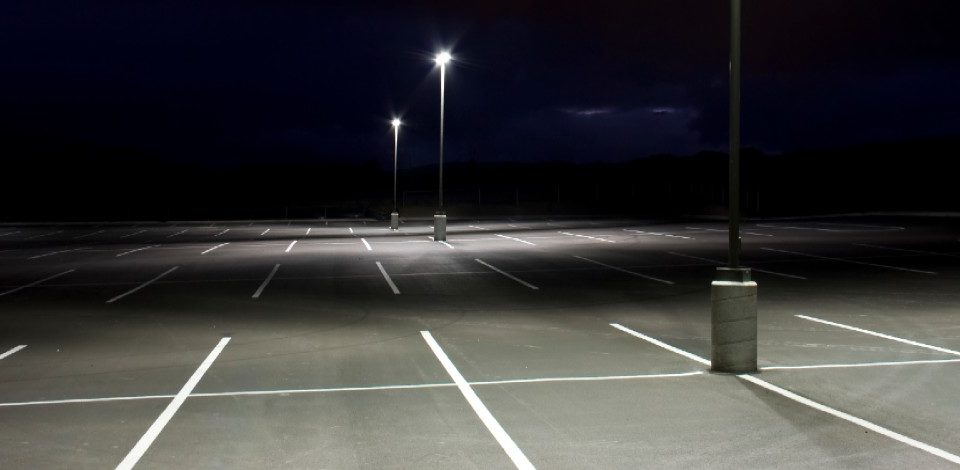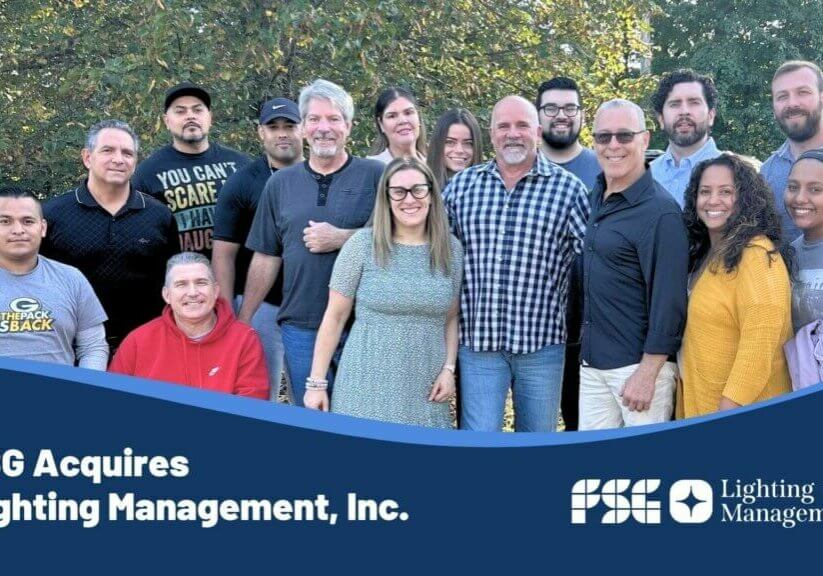Everything You Ever Wanted to Know About Foot Candles But Were Afraid to Ask
Let’s start with the definition...
What is a “foot candle”?
A foot-candle (or foot-candle, fc, lm/ft2, or ft-c) is a measurement of light intensity. One foot-candle is defined as enough light to saturate a one-foot square with one lumen of light.
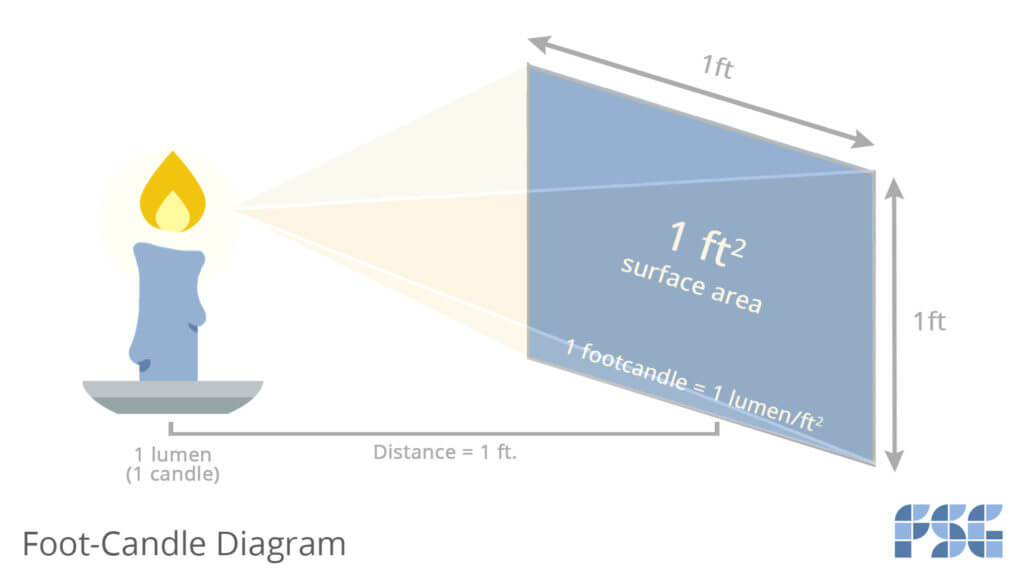
Source: FSG
But what does that mean, exactly? Well rather than measuring the amount of light that leaves a light source (lumen output), foot-candle measurements focus on the amount of light that reaches a surface area.
For example, a foot-candle relates to the amount of light that is on the ground surface beneath a parking lot light as opposed to the output of the parking lot light.
Here are some typical foot-candle measurements for given light conditions:
- Unobstructed sunlight: 10,000 fc
- Overcast sunlight: 100 fc
- Visually intensive workspace: 200 fc
- Store environment: 5 fc
- Residential space (living): 5-40 fc
- Residential space (working): 70-90 fc
At this point, it should be noted that “foot-candles” as a unit of measurement are used most commonly in places that follow the United States customary units of measurement. In other parts of the world, such as Europe, the SI-derived measurement called “lux” is used. Lux is essentially the same as foot-candles, but it defines the area being lit as a one-meter square, rather than a one-foot square.

What is the Purpose of a Foot-Candle?
So, what is the use of a measurement like foot-candles? Basically, the idea of using foot-candles is to ensure that areas that require certain light levels are actually receiving those light levels. This can be very important for electrical construction as well.
Offices, manufacturing facilities, and workrooms need significantly higher foot-candle measurements in order to make work easier and less stressful on your eyes.

Source: FSG
Hallways and lobbies, on the other hand, need lower foot-candle readings because the light doesn’t need to be bright enough for people hunched over reports and keyboards. Instead, the light level needs to be just bright enough to show off the decor (and bright enough to keep people from tripping over said decor), but not so bright as to feel harsh or sterile.

Source: FSG
There are lots of organizations that have special lighting requirements, and foot-candles are the go-to measurement to make sure the right amount of light is actually touching the objects it needs to illuminate.
Museums need specific light levels to create the right ambiance and avoid damaging sensitive artifacts. Horticulture requires very accurate foot-candle readings in order to make sure all plants are bathed in the appropriate amount (and type) of light. Movie and video producers carry little meters with them to check foot-candles on subjects they’re going to shoot.
Any business or organization that has physical security requirements also need to be aware of the foot-candle readings in sensitive areas, and around cameras and doors.
Without light, we simply can’t live and work the way we need to. If you have special requirements for how much light needs to be hitting a given space, you’ll want to know how many foot-candles are shining on that space.
How to Measure Foot-Candle Readings
Measuring foot-candles falls under a broad branch of scientific inquiry called “photometry.” Photometry is the measurement of light as our eyes perceive it. This is different from “radiometry,” which is the measurement of all forms of radiant energy (including light) in absolute terms.
Photometry, the measurement of light as our eyes interpret it, is important for businesses and organizations of all kinds because you need to know what customers and staff are experiencing every time they work or shop in one of your buildings.
Really, that’s what light is for your business: another tool. Like many tools, it can be used in different settings for different effects. As mentioned earlier, light in public areas should typically be lower and warmer, while work areas should receive lots of bright light. Foot-candle measurements are the thing you need to make sure your tool–light–is working properly.
The best tool for your photometric (and thus your foot-candle readings) is a sensitive light meter. Light meters are available from many manufacturers at many different price points. Some are as affordable as $20, some are pricier at $200 (or more). The right meter for you is one that is accurate and fast.
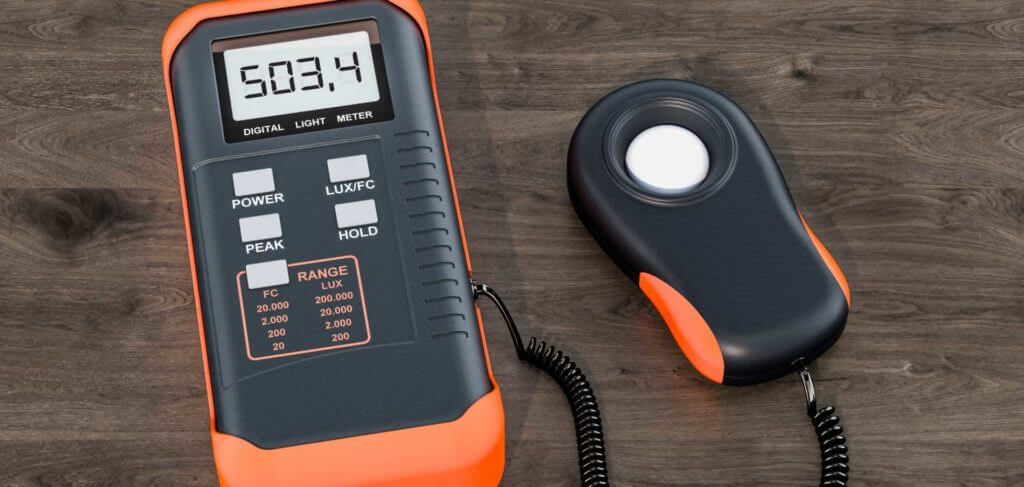
Source: iStock
Most light meters will output their readings in foot-candles or “lux”(the SI-derived unit which is similar to foot-candles but measures a one-meter square rather than a one-foot square).
If you do get a light meter that renders its measurements in lux, and you really need them in foot-candles, just remember this number: 10.764. That’s the number to divide your lux by in order to get foot-candles. So, quick math will show us that 1 lux is equal to 0.092903 foot-candles.
How Many Lumens Is a Foot Candle?
One foot-candle equals 10.76 lumens (a lumen is considered the same as lux, which is what most modern light meters calculate their measurements in), so in order to convert your foot-candles to lumens, you will need to take the amount of foot-candles measured and multiply by 10.76 to get the number of lumens.
For example, 50 foot-candles would be 50 x 10.76 = 538 lumens.
How Many Watts Is a Foot Candle?
In order to calculate your number of watts, you must know that one lumen equals 0.001496 watts. After you have your total number of lumens calculated, you take the total number of lumens and multiply that by 0.001496.
For example, 538 lumens x 0.001496 watts = 0.805 watts per square meter. This means that your 50 foot-candles would equal 0.805 watts per square meter.
Calculation Cheat Sheet
- To calculate Lumens (Lux) from foot-candles: Lumens = Foot Candles x 10.76
- To calculate Watts from foot-candles: Watts = Lumens x 0.001496
- You can also calculate the number of watts directly from foot-candles by combining both equations & using the following: Watts = Foot Candles x 0.01609696
Use these resources to improve your commercial lighting.
What to do with Foot-Candle Readings?
If you want to get serious about making your light levels work better for your organization, then it’s important to know about foot-candles and how they are measured.
But how do you know which lights you need to increase or decrease the foot-candle readings in your workspace? If all things were equal, you would simply take your foot-candle readings and convert the deficit or overage to lumens. Then you add or reduce lumens to achieve the target foot-candle measurement for your space.
For example, the IES (Illuminating Engineer Society) recommended foot-candle reading for a parking garage is 10. If the lighted areas in your parking garage are reading 7 foot-candles, then you need more lumens to brighten the space. Depending on the replacement lamps you choose, the overall light level in the space can be increased by replacing the existing lamps 1 for 1.
If there are shadows or dark areas in your space this can often be improved by adding new led lighting or upgrading the fixtures to better distribute the light from each lamp. For example, in sports lighting such as Tennis Courts, shadows, or areas where lighting levels are much lower can cause problems for players during sporting events.
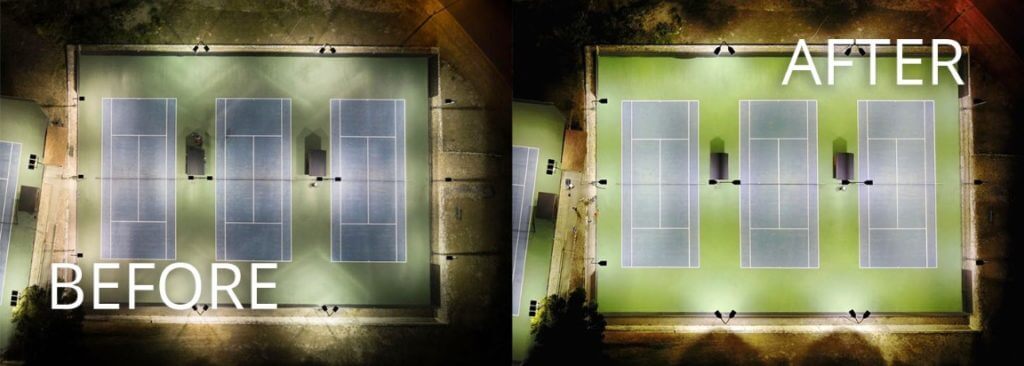
Source: FSG
Using a light meter is the best way to measure the brightness and distribution of light in any space.
Need Help with Foot-candle Readings?
Using light meters to test a given space, then adjusting the light appropriately, is the secret to reducing eye stress, fatigue, and headaches among your staff. It’s the secret to making your store floor look inviting and irresistible for customers. It’s the secret to using light to the best of your ability, and to your greatest advantage.
But do you want to do it yourself?
Your job is to run your business as well as you can, and that means your job never ends. There are so many things you can–and should–be doing besides fiddling with light meters and adjusting light temps and levels. For that matter, the job of everyone in your organization is to make things run better, more smoothly, and more efficiently.
To get the most out of your facilities, you need experts. If you don’t have any lighting experts on your team already, give FSG a call. We know you and your employees really don’t have the time to run your own tests and adjust your own settings. That’s why FSG makes it easy to get help.
Call us at (512) 886-1253 or contact us here and tell us about the lighting challenges at your business. If you need your lights to be brighter (or dimmer), or if you just aren’t sure what’s appropriate in a given setting (like a restaurant), talk to us today. We’re here to help make your business or organization better at what it does. And if all you need right now is some lighting supplies, you can visit FSG Storefront to shop online.
















